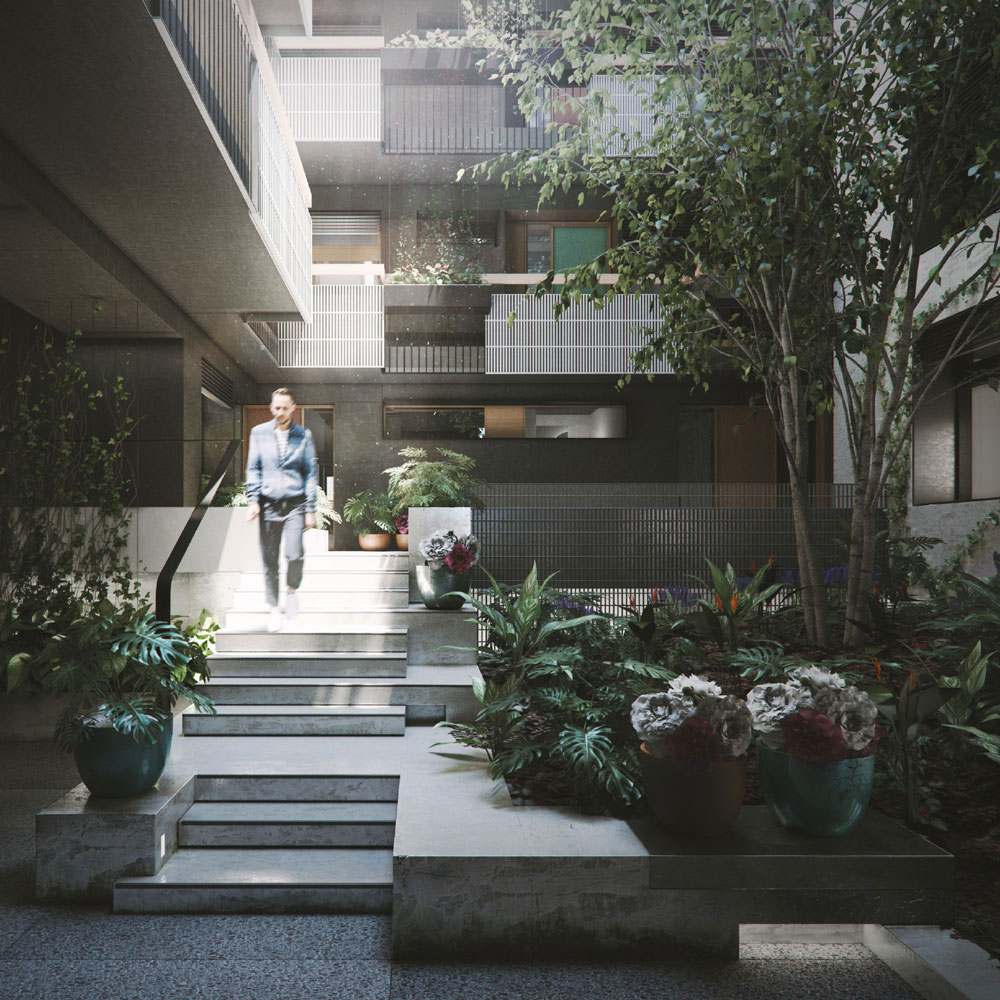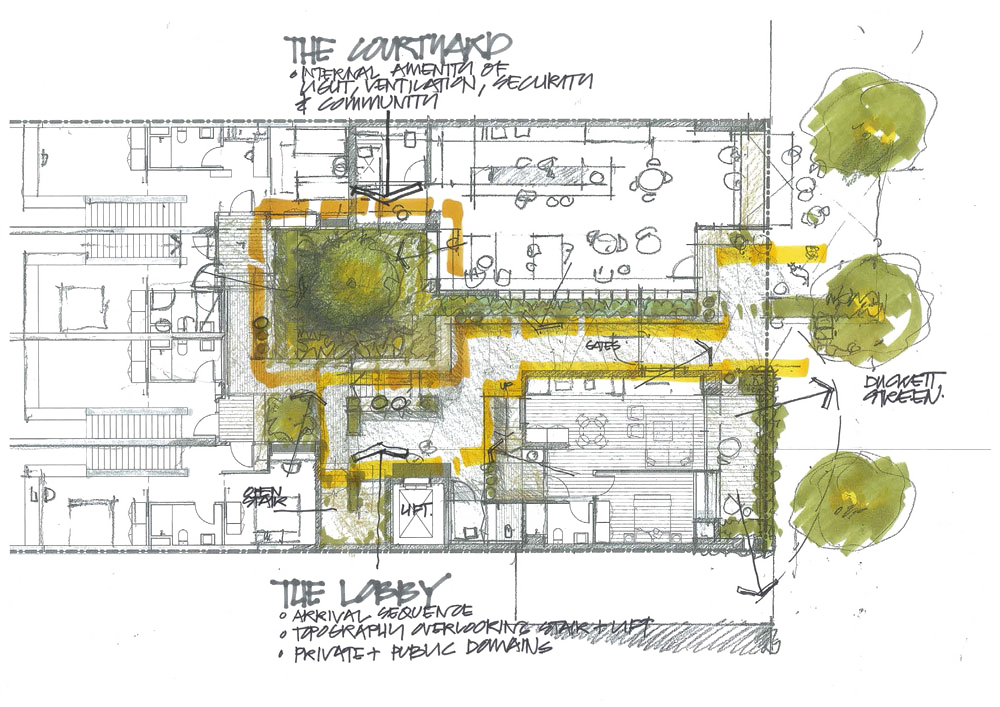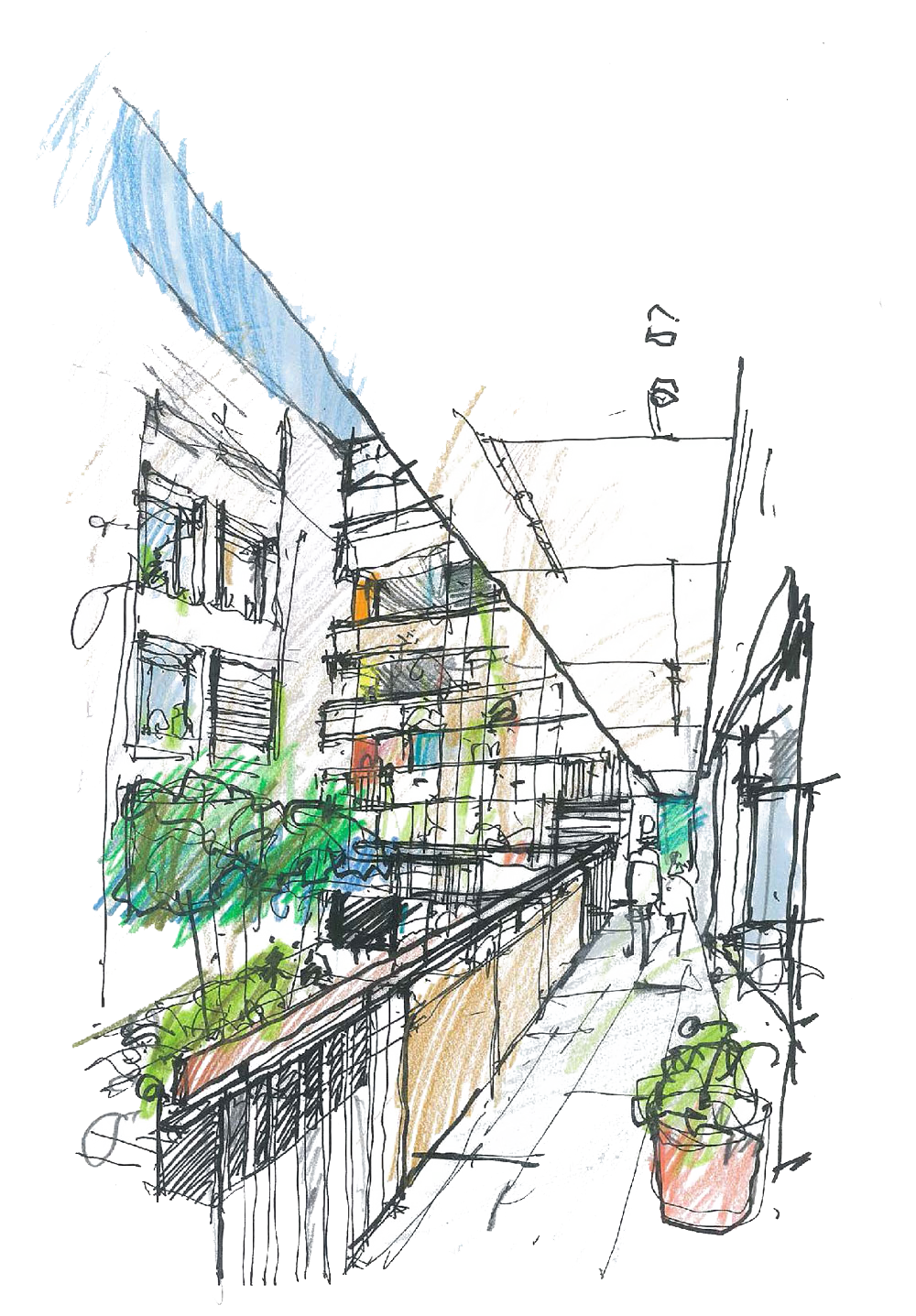Hayball’s offices in Southbank (Images by David Houston)
A conversation with hayball
The second of our interviews during the Melbourne Study Tour was with Hayball Directors Luc Baldi and Bianca Hung. Hayball has offices in Melbourne, Sydney and Brisbane and is the largest of the Nightingale Village firms. When we visited them at their studio in Southbank, we were surprised at just how large they are; their main office houses 150 employees with a satellite space down the road that offers capacity for another 40!
Hayball works at many different scales across many different sectors, both at home in Australia and internationally. It was a great opportunity for us to get the perspective of such a large firm on the Nightingale model and their reasons for being involved in a project that may be a little smaller than their usual fare.
At first glance it would seem that Hayball are the odd-one out of the firms involved in Nightingale Village, but it is clear that they are committed to the Nightingale Model. Luc informed us that to him it was a ‘no brainer’ when it came to getting involved with the project. The appeal being its ethical nature and how value management in the projects doesn’t take away from the design focus which in many cases ruins great architecture. For Luc, being able to control that value management process is essential in delivering a great building; something that was also expressed in our interview with Kennedy Nolan.
Similarly to Kennedy Nolan, Luc and Bianca walked us through the presentation that was shown to potential Nightingale residents a week earlier at the Nightingale Village information night.
Hayball’s project is tucked in between the sites of Breathe Architecture and Kennedy Nolan at the heart of the new precinct, with the Architecture Architecture site located to the south. Their position in the Village is unique in this way; offering them the advantage of having known development on all sides of their boundary. This knowledge has allowed Hayball an opportunity to work with their neighbours to achieve the best design outcomes for the precinct as a whole – there is no mystery and will be no surprises as to what pops up next door.
This advantage manifested itself early in the process, with Hayball conceding a part of their site to Kennedy Nolan in order to make both sites more viable. This collaborative ethos is not limited to Hayball and Kennedy Nolan, but across all the other architects and sites; almost all of which have given up some space to create a shared public mews, showing that great architecture not only benefits its inhabitants but the greater community.
The design of Hayball’s project is unique within the Village, as they have taken the approach to include a central courtyard. This courtyard allows light to penetrate through the site, as well as providing the opportunity for cross ventilation to the apartments. It is from this design aspect that the project receives its name: CRT+YRD. Hayball have designed from the human scale, keeping the future residents in mind at all stages of design development; leading to a keen awareness of how residents will interact within their building and how the thresholds between public and private can be blurred. For instance, the central courtyard means that circulation spaces pass directly in front of some apartment windows; Hayball took this as an opportunity to promote interaction, using exterior aluminium blinds for privacy and providing the possibility of opening up to the courtyard.
The entry to their building has borrowed cues from the landscape and laneways of Melbourne; Bianca explains that the informal seating and elements for children to play create an urban experience for not only the residents but the public as well. Moving through the building, the courtyard is treated as the ‘front yard’ of the apartments with the private terraces being the ‘backyards’, this design consideration links to the typical connotations of residential living that people in Australia can understand. Coupled with the more generous apartment sizes, the idea is to appeal to people who may not have considered apartment living an option.
Like the other buildings that make up Nightingale Village, Hayball are working in close collaboration with Landscape Architects Openwork, and are working closely with them on all landscape elements, including the specification of a suitable ‘big tree’ or statement plantings to fill up their central courtyard as an oasis of green space; an aspect that is at the core of their design and will provide a pleasant experience for the residents in their ‘front yard’.
According to Luc being able to amplify the core values of Nightingale and execute them well is a main goal of Hayball’s project. The details of how a resident lives, how they approach their space and their journey through the building is what creates their home and sense of place. When all the residents are able to feel this way, then a strong bond of community can be formed. From Hayball’s experience gained working at larger scales, they are able to bring efficiency to their design; modulisation of elements and minimisation of space for services come as second nature to them, resulting in cost and space savings for the apartments.
Hayball truly believe in emerging development models such as the Nightingale model, on this project all of their investors have come from in-house sources; putting their money where their mouth is when it comes to creating great architecture and exceptional spaces for people to live in. In order to make architecture like this it is imperative that the architect is able to manage the development from start to finish, to have a guaranteed outcome that is not ruined by cost saving and profit driven principles. The Nightingale model allows Hayball to do this, and judging from their commitment to this project and creating architecture focused on the human scale and how people live, I don’t think that this will be their last.
We would like to extend our thanks to Luc Baldi and Bianca Hung for taking the time to chat with us.
By David Houston & Margarita Simpson





